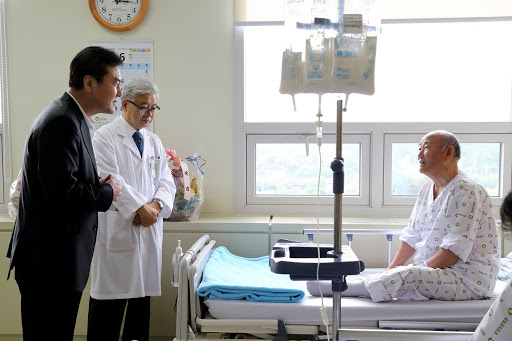
South Korea is a country in Asia with a population of over 51 million. Its healthcare system is ranked among the best in the world. It has low mortality rates and a higher-than-average life expectancy. It also has some of the best outcomes for some diseases like colorectal and cervical cancers. South Korea has a single-payer universal healthcare scheme. After the Korean War ended, from 1955 to 1961 Seoul National University and the University of Minnesota partnered to create the Minnesota Project. It helped familiarize South Korean doctors with medical methodology and create a new wave of medical leaders. The success of the Minnesota Project is often accredited with helping to shape South Korea’s health industry into what it is today.
In 1963, South Korea passed the Medical Insurance Act which was their first health insurance law. It allowed employers to voluntary provide health insurance to their employees. Then in 1977, health insurance was made mandatory and also required employee insurance in larger companies. It also introduced the Medical Aid Program which provides medical services for the low-income. Insurance would be provided to government employees in 1979 and to the self-employed in 1981. South Korea reached universal health coverage in 1989. The National Health Insurance Service (NHIS) was created in 2000 and combined all schemes into a single health insurer, the National Health Insurance Program. Around 96% of people in South Korea are covered under the NHIS with the rest being covered by the Medical Aid Program.
The National Health Insurance Program has three sources of funding. The first source of funding are the payments made by the insured. Employed contributors are required to pay 5.08% of their salary. Employers and employees each pay 50% of this amount. The contributions of people who are self-employed are based on their level of income. For the insured living on islands or remote rural areas, there is a system of reduced contributions. The second source of funding is the government. The national government provides 14% of the total amount of funding. It is comprised of the contributions paid by the insured of National Health Insurance Program. The third source of funding is the surcharge on tobacco. This provides 6% of the total amount of funding.

Korean public healthcare covers around 50-80% of medical costs depending on the individual’s needs and the treatment they receive. This includes the costs for general procedures, accident coverage, medical checkups and prescription medication. The National Health Insurance also covers expenses should an employee be hurt on the job or in case of unemployment. Patients pay 20% of the cost for insured services in inpatient care and differential cost-sharing for outpatient care, depending on the level of health provider. The poor are exempted from cost-sharing at the point of service and vulnerable patient groups have access to discounted copayment rates. There is a ceiling on out-of-pocket payments but the ceiling only applies to insured services. Private insurance is available and is mostly used by the wealthy and expatriates. It will not reduce the cost of medical procedures but it can subsidize the 20-50% out of pocket payment that is required when residents only use the public insurance.
Despite the healthcare system in South Korea being among the best in the world, there are still some issues. There is a large disparity between the healthcare in urban versus rural areas. Urban health facilities tend to be better staffed and equipped than their rural counterparts. Another issue is that South Korea’s healthcare system is more focused on treatment than preventative. Even though there are safety-nets in place there are still some high out-of-pocket costs. However, over the last few decades South Korea has created a world class healthcare system. It is a popular medical tourist destination, especially for China. They are continually striving to better the healthcare for their citizens.
